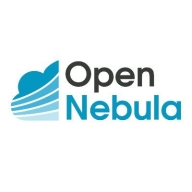


OpenNebula and Spot are cloud management platforms that compete in the enterprise IT environment management space. OpenNebula appears more straightforward and user-friendly, while Spot offers significant cost-saving benefits.
Features: OpenNebula provides a streamlined virtualization system and robust integration with different cloud environments. It is known for its user-friendly interfaces and open-source flexibility, making it easily adaptable. Spot, on the other hand, specializes in resource efficiency and cost management through innovative optimization tools, offering advanced automation to reduce overheads.
Ease of Deployment and Customer Service: OpenNebula focuses on simplicity in deployment and benefits from an active support community that makes it especially appealing for smaller businesses. Spot provides an intuitive setup designed for companies seeking to control cloud expenses while ensuring quality. Both platforms offer solid customer support, though OpenNebula often wins favor for rapid deployment in limited environments.
Pricing and ROI: OpenNebula's cost-effective open-source model requires low initial investment, appealing to budget-conscious enterprises, and delivers a reliable ROI. Spot justifies its higher starting costs with significant ROI through its cost-optimization features, proving attractive for businesses focused on maximizing efficiency and minimizing cloud spend.



IBM Turbonomic offers automation, planning, and right-sizing recommendations to streamline resource management, improve efficiencies, and optimize costs across virtualized environments and cloud platforms.
IBM Turbonomic is valued for its capability to optimize resource allocation and monitor virtual environments efficiently. It facilitates automated decision-making in VM sizing, load balancing, and cost optimization for both on-premises and cloud deployments. Users can leverage insights for workload placement, ensure peak performance assurance, and effectively right-size across VMware and Azure. The ongoing transition to HTML5 aims to improve visual and navigational ease, while expanded reporting features are anticipated. Opportunities for improved training, documentation, and integrations enhance platform usability and functionality.
What Are the Key Features?In finance, IBM Turbonomic aids in maintaining platform efficiency during market fluctuations. Healthcare organizations leverage its capability for resource optimization during high-demand periods to enhance patient care support. Retailers use it for planning in peak seasons, ensuring resources align with fluctuating demand to maintain performance continuity.
OpenNebula provides the most simple but feature-rich and flexible solution for the comprehensive management of virtualized data centers to enable private, public and hybrid IaaS clouds. OpenNebula interoperability makes cloud an evolution by leveraging existing IT assets, protecting your investments, and avoiding vendor lock-in.
OpenNebula is a turnkey enterprise-ready solution that includes all the features needed to provide an on-premises (private) cloud offering, and to offer public cloud services.
Spot provides dynamic workload management for cloud environments, offering cost optimization and enhanced performance. It stands out with its unique approach to managing resources efficiently.
Spot is designed to enhance cloud resource utilization and cost-effectiveness through intelligent workload management. With real-time analysis, Spot determines and deploys the most efficient resources, ensuring optimal performance for applications. Businesses benefit from reduced cloud expenses and increased operational efficiency, making it an essential tool for managing cloud infrastructure effectively.
What are the key features of Spot?In finance, Spot ensures cost-effective cloud computing for trading platforms, while in e-commerce, it dynamically manages back-end processes. In the entertainment industry, Spot optimizes media streaming by deploying resources when user demand spikes. Each industry leverages Spot to maximize performance and minimize operational costs, demonstrating its versatility and reliability across sectors.
We monitor all Cloud Management reviews to prevent fraudulent reviews and keep review quality high. We do not post reviews by company employees or direct competitors. We validate each review for authenticity via cross-reference with LinkedIn, and personal follow-up with the reviewer when necessary.